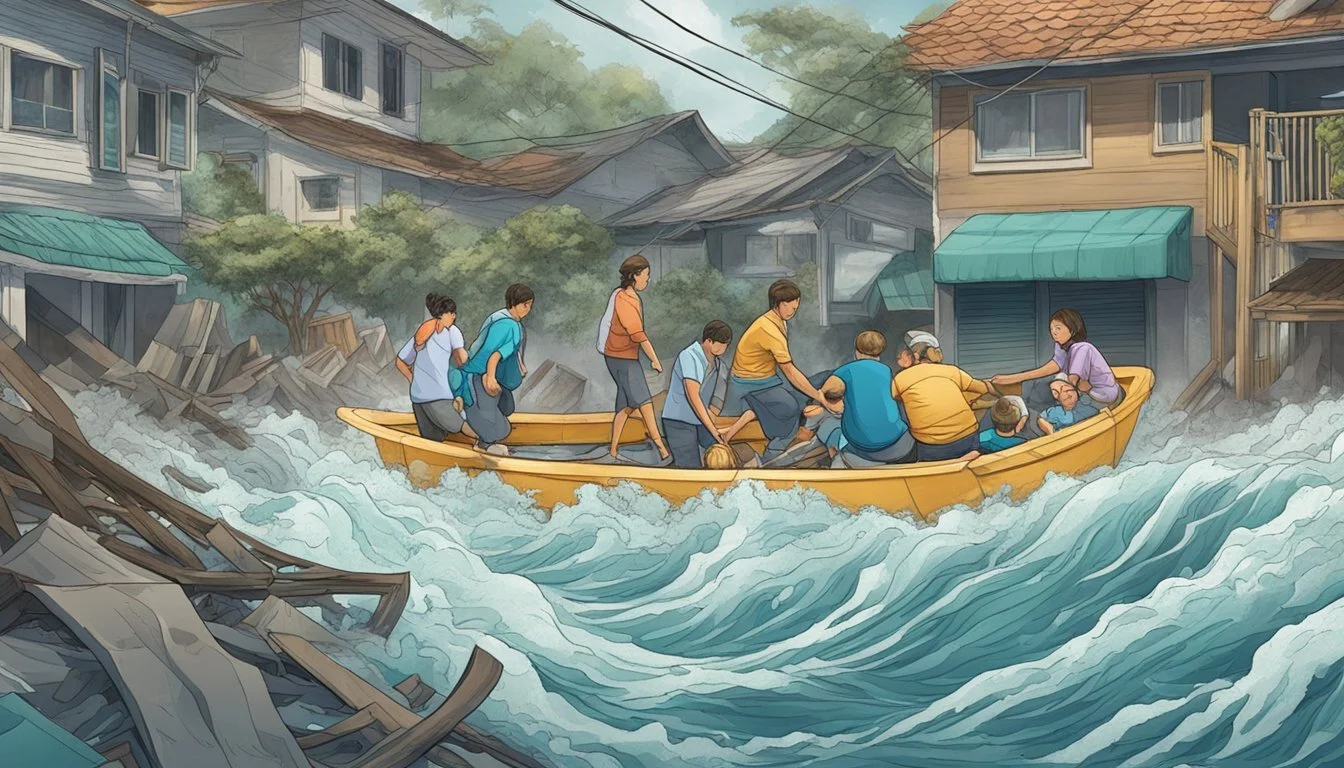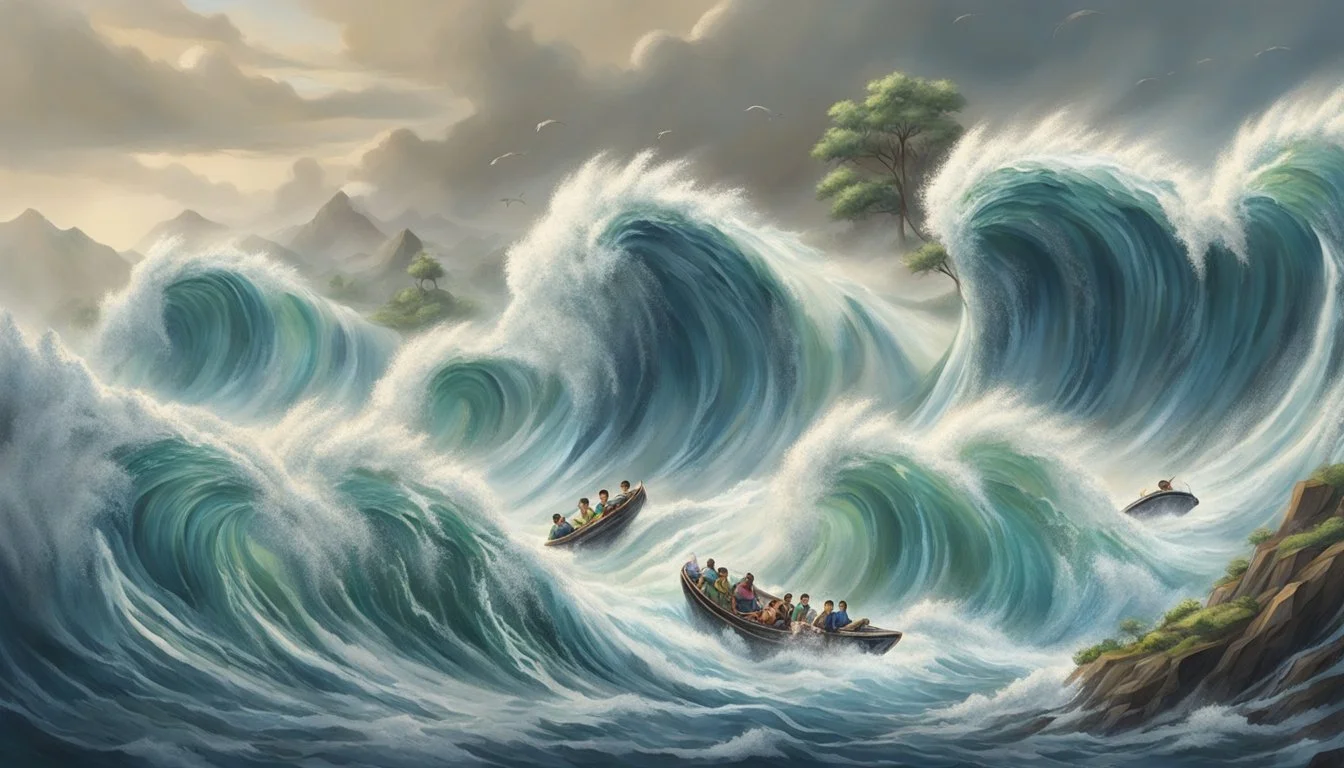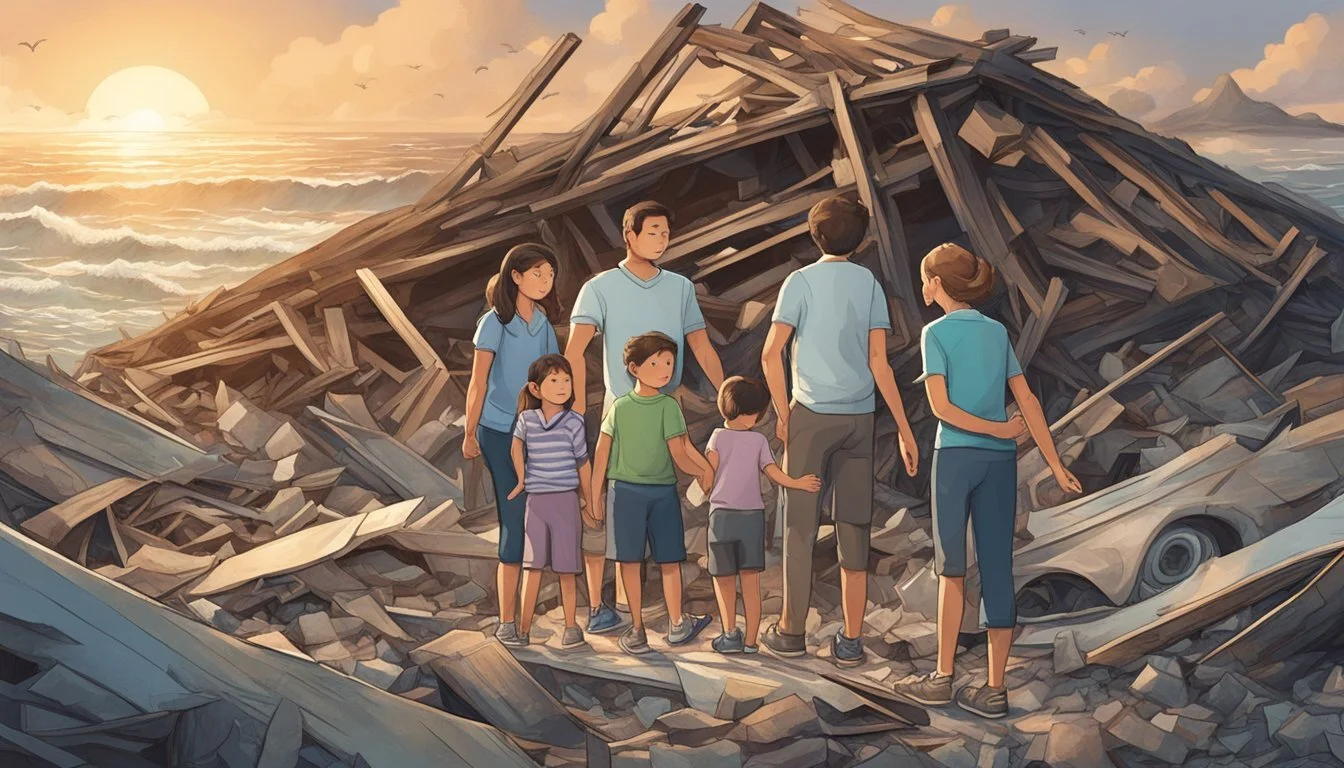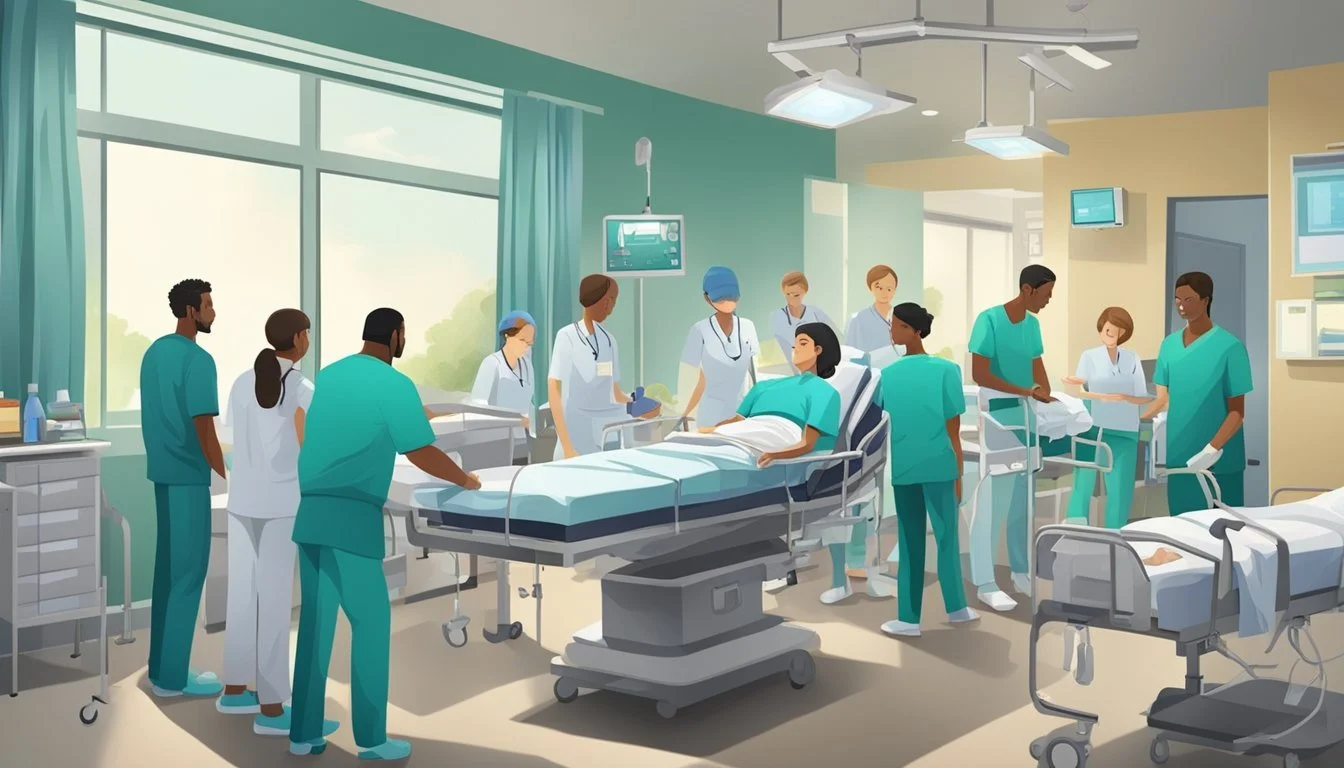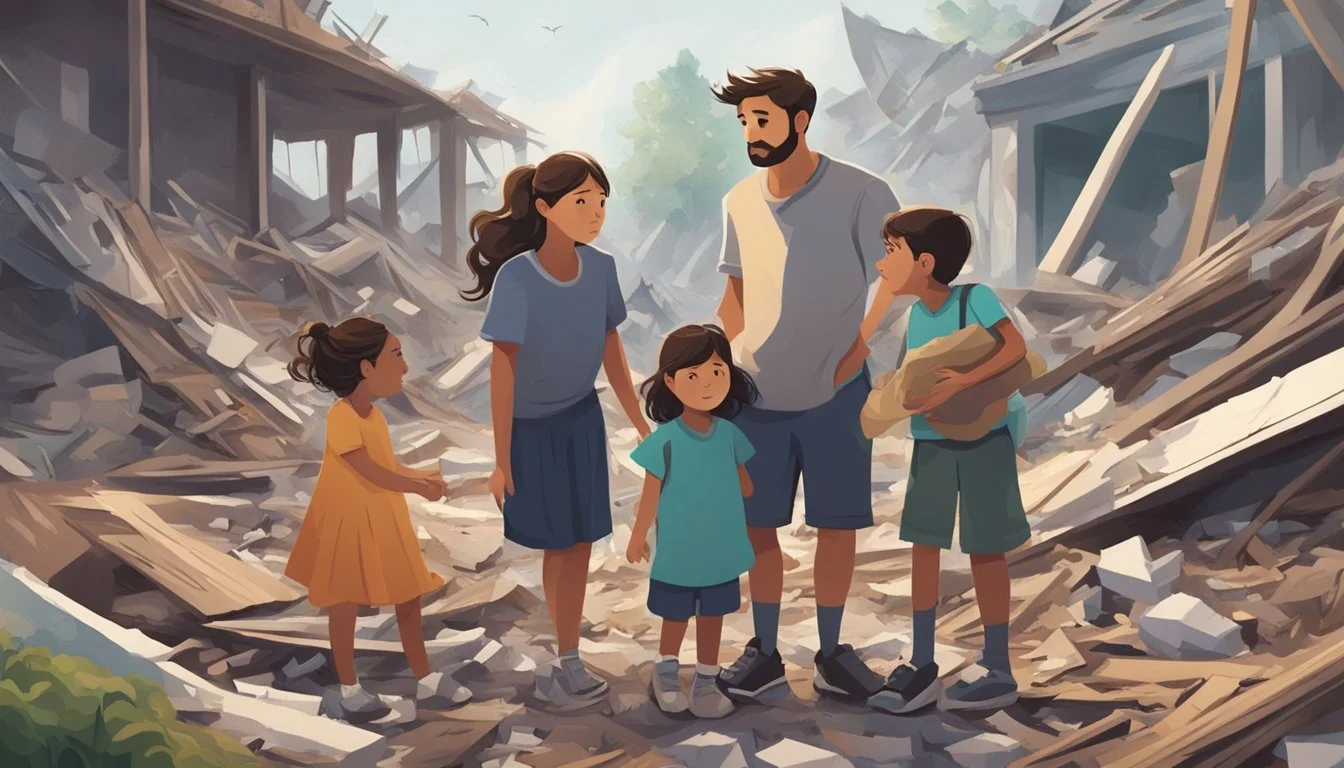Surviving the Impossible: The Real Family Behind 'The Impossible'
A True Story of Resilience
The 2012 film "The Impossible" captivated audiences with its harrowing portrayal of a family's struggle to survive the 2004 Indian Ocean tsunami. Based on true events, the movie depicts the experiences of María Belón, Enrique Álvarez, and their three children during one of the deadliest natural disasters in recorded history.
The real Álvarez-Belón family's story of survival and reunion against overwhelming odds serves as a testament to human resilience and the power of hope in the face of unimaginable tragedy. Their ordeal began on December 26, 2004, when massive waves struck the Thai resort where they were vacationing, separating the family members and plunging them into a desperate fight for survival.
In the aftermath of the tsunami, María and Enrique Álvarez chose to honor those who did not survive by dedicating their lives to helping others. María, a doctor, became an advocate for tsunami survivors and a motivational speaker, while Enrique volunteered with NGOs. Their experiences continue to inspire and remind us of the strength of the human spirit in times of crisis.
The True Story of the Belón Family
The Belón family's harrowing experience during the 2004 Indian Ocean tsunami forms the basis for the film "The Impossible". Their incredible story of survival and reunion captivated audiences worldwide.
The Day the Tsunami Struck
On December 26, 2004, María Belón, her husband Enrique Álvarez, and their three sons were enjoying a peaceful Christmas vacation in Khao Lak, Thailand. Their idyllic holiday took a devastating turn when massive waves crashed into their beachfront resort.
The family was swept apart by the powerful surge. María clung to a tree with her eldest son, while Enrique and the two younger boys were carried in different directions.
As the water receded, chaos and destruction surrounded them. The once-picturesque landscape had transformed into a scene of utter devastation.
Struggle for Survival in the Aftermath
María and her eldest son battled severe injuries and the constant threat of drowning. They navigated through debris-filled waters, desperately searching for safety and medical attention.
Meanwhile, Enrique fought to keep his two younger sons alive amidst the wreckage. They climbed trees and sought higher ground to avoid subsequent waves.
The family faced extreme physical and emotional challenges. Lack of food, clean water, and medical supplies compounded their dire situation.
Local residents and fellow survivors provided crucial assistance, demonstrating remarkable compassion in the face of widespread tragedy.
Miraculous Reunion Amidst Tragedy
Against overwhelming odds, the Belón family's paths converged at a nearby hospital. María, severely injured, was receiving treatment when Enrique and the two younger boys arrived searching for her.
Their emotional reunion was a beacon of hope amidst the devastation. The family's story of survival became a symbol of resilience for many affected by the disaster.
In the following days, they worked tirelessly to help other survivors and honor those lost. Their experience forged a deep commitment to humanitarian causes and disaster relief efforts.
The Belón family's journey from tragedy to triumph inspired millions and shed light on the power of human perseverance in the face of unimaginable adversity.
The Making of 'The Impossible'
'The Impossible' brought the harrowing true story of the Belón-Álvarez family's survival during the 2004 Indian Ocean tsunami to the big screen. The film's creation involved meticulous planning, innovative filmmaking techniques, and powerful performances from its cast.
Adapting Real-Life Events to Film
Director Juan Antonio Bayona faced the challenge of translating the family's experiences into a compelling cinematic narrative. He worked closely with María Belón to ensure authenticity while crafting a story that would resonate with audiences worldwide.
The filmmakers made some changes to broaden the film's appeal. They altered the family's nationality from Spanish to British and changed their names. These adjustments aimed to make the story more relatable to international viewers.
Despite these modifications, Bayona strived to maintain the emotional core of the family's ordeal. He focused on capturing the raw human experience of survival and reunion amidst chaos.
Challenges of Recreating the Tsunami
Recreating the devastating tsunami posed significant technical and logistical challenges. The filmmakers used a combination of practical effects and CGI to portray the massive wave and its aftermath realistically.
Large water tanks were constructed to film the underwater scenes. These setups allowed the actors to perform in actual water, adding to the authenticity of their performances.
The production team meticulously researched the disaster's impact on the landscape. They recreated destroyed resorts and debris-strewn beaches to depict the tsunami's aftermath accurately.
Careful attention was paid to sound design, using recordings of real tsunamis to create a terrifying auditory experience for viewers.
Casting and Portrayals by Hollywood Stars
The film's success relied heavily on powerful performances from its cast. Naomi Watts and Ewan McGregor were chosen to portray María and Enrique, bringing star power and acting prowess to the project.
Watts underwent extensive physical preparation for her role, learning to hold her breath underwater for extended periods. Her commitment paid off with an Oscar nomination for Best Actress.
A young Tom Holland made his feature film debut as the eldest son, Lucas. His performance showcased the emotional depth that would later propel him to stardom.
The actors worked closely with the real-life family members they were portraying. This collaboration helped them capture the nuances of their characters' experiences and emotions.
Profiles in Courage and Resilience
The Álvarez-Belón family's survival story exemplifies extraordinary courage and resilience in the face of unimaginable adversity. Their experiences during and after the 2004 Indian Ocean tsunami reveal profound strength and determination.
María Belón: The Pillar of Strength
María Belón emerged as the family's pillar of strength during the catastrophe. As a doctor, she used her medical knowledge to assess injuries and guide her family to safety. Despite sustaining severe injuries herself, María fought to stay conscious and protect her son Lucas.
In the years following the tsunami, María transformed her harrowing experience into a platform for advocacy. She became a powerful voice for tsunami survivors, sharing her story around the world as a motivational speaker. Her resilience and dedication to helping others exemplify the human capacity to find purpose in tragedy.
María's talks focus on the importance of unity, compassion, and the strength of the human spirit. Her message resonates with audiences globally, inspiring hope and courage in the face of adversity.
Lucas: The Prototypical Elder Son
Lucas, the eldest son of the Álvarez-Belón family, displayed remarkable courage during the tsunami. At just 10 years old, he took on a crucial role in the family's survival. Lucas helped his mother stay afloat in the turbulent waters and assisted in rescuing other survivors.
His quick thinking and maturity beyond his years were instrumental in keeping the family together during the chaos. Lucas's actions exemplify the unexpected strength children can summon in crisis situations.
In the aftermath, Lucas, like his mother, channeled his experience into positive action. He became involved in humanitarian efforts, using his story to raise awareness about disaster preparedness and the importance of community support in times of crisis.
The Impact on Lives and Popular Culture
The real family's survival story profoundly influenced society and media portrayals of natural disasters. Their experiences sparked educational initiatives and reshaped disaster representation in film and television.
Educational Outcomes and Public Speaking
María Belón, the mother who inspired Naomi Watts' character, became a motivational speaker after her ordeal. She shares her family's story at conferences and universities, raising awareness about disaster preparedness and resilience. Her talks emphasize the importance of community support during crises.
Belón's eldest son, Lucas, pursued a medical career inspired by the doctors who saved his mother's life. He now advocates for improved emergency response systems in disaster-prone areas.
The family's experiences led to the development of tsunami education programs in coastal communities. These initiatives teach residents about warning signs and evacuation procedures.
Representation of Disaster in Media
"The Impossible" directed by J.A. Bayona set a new standard for realistic disaster depictions in cinema. The film's harrowing tsunami scenes, created with practical effects and CGI, received praise for their authenticity.
The movie's success influenced other filmmakers to prioritize accuracy in portraying natural disasters. It sparked discussions about ethical storytelling when adapting real-life tragedies for the screen.
Television documentaries and news specials frequently feature the Belón family's story as a case study in survival and recovery. Their experiences continue to shape public understanding of disaster impact and human resilience.
Medical and Humanitarian Responses
The 2004 Indian Ocean tsunami triggered a massive international response. Medical teams rushed to treat survivors while humanitarian organizations provided critical aid and support.
Immediate Medical Efforts During Crisis
Doctors and nurses faced overwhelming challenges in the aftermath. Hospitals were quickly overwhelmed with injured victims. Medical professionals treated severe wounds, fractures, and infections with limited supplies.
Field hospitals were rapidly set up to expand treatment capacity. Emergency surgeries were performed in makeshift operating rooms. Medical teams worked tirelessly, often in 24-hour shifts.
Clean water shortages and unsanitary conditions increased the risk of disease outbreaks. Aid workers distributed water purification tablets and antibiotics to prevent epidemics.
Global Humanitarian Support and Involvement
The disaster sparked an unprecedented global humanitarian response. International organizations like the Red Cross mobilized thousands of volunteers. Governments and NGOs pledged billions in aid.
Relief efforts focused on providing:
Emergency shelter
Food and clean water
Medical supplies
Clothing
Military forces from multiple countries assisted with search and rescue operations. Ships and aircraft delivered tons of critical supplies to affected areas.
Psychological Effects and Recovery
The tsunami's psychological impact was profound. Many survivors experienced post-traumatic stress disorder, depression, and anxiety. Children were especially vulnerable to long-term trauma.
Mental health professionals provided counseling to help survivors cope. Support groups allowed victims to share experiences and find comfort. Art and play therapy helped children process their emotions.
Recovery was a long-term process. Rebuilding lives and communities took years. Resilience and community support played key roles in psychological healing.
Lessons Learned: Preparedness and Education
The 2004 Indian Ocean tsunami exposed critical gaps in disaster preparedness and response. This catastrophic event spurred significant advancements in earthquake and tsunami research, as well as improvements to disaster response frameworks worldwide.
Advancing Earthquake and Tsunami Research
Scientists intensified efforts to understand and predict tsunamis after the 2004 disaster. New technologies emerged for early detection and warning systems. Seismic networks expanded globally, improving earthquake monitoring capabilities.
Researchers developed more accurate tsunami modeling techniques. These models help predict wave heights and arrival times, crucial for evacuation planning.
Ocean floor mapping projects increased, revealing underwater geological features that influence tsunami behavior. This knowledge aids in identifying high-risk coastal areas.
Public education initiatives grew, teaching communities about tsunami warning signs and evacuation procedures. Schools in vulnerable regions now include tsunami preparedness in their curricula.
Strengthening Disaster Response Frameworks
The 2004 tsunami highlighted weaknesses in international disaster response coordination. Many countries have since updated their emergency management plans.
Key improvements include:
Enhanced communication systems for rapid information sharing
Streamlined procedures for deploying international aid
Pre-positioned emergency supplies in high-risk areas
Regular disaster drills to test response capabilities
Governments invested in resilient infrastructure along coastlines. Building codes in tsunami-prone regions now incorporate specific safety measures.
NGOs and aid organizations developed specialized teams for water-related disasters. These teams receive training in search and rescue, medical care, and water purification.
Local communities play a larger role in disaster preparedness. Many coastal towns now have designated evacuation routes and safe zones.

